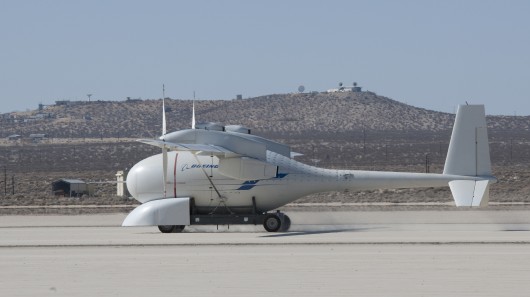Boeing’s hydrogen-powered Phantom Eye taxis closer to second flight
By Darren Quick
February 7, 2013
Following the first flight of its Phantom Eye in June of last year, Boeing has performed software and hardware upgrades in preparation for its second flight that will see it climb to higher altitudes. This week, the hydrogen-powered unmanned aircraft system made a significant step towards such a second flight with the completion of taxi testing at Edwards Air Force Base in California.
On its first flight, the Phantom Eye climbed to an altitude of 4,080 feet and reached speeds of 62 knots (71 mph/115 km/h). However, when landing, the Phantom Eye’s landing gear dug into the Edwards Air Force Base lakebed and broke. The Boeing team says it has now improved the aircraft’s landing system, while also improving its autonomous flight systems and upgrading its engine oil pumps.
The taxi testing, which was conducted on February 6, saw the Phantom Eye demonstrator reaching speeds of up to 40 knots (46 mph/74 km/h) while perched atop its launch cart. The successful completion of the taxi tests brings the aircraft a step closer to its second flight, which is expected to be more demanding than the first.
Once operational, the Phantom Eye, boasting a wingspan of 150 feet (46 m), will reach altitudes of up to 65,000 feet and carry payloads weighing up to 450 pounds (204 kg). Its liquid-hydrogen propulsion system, whose only byproduct is water, is designed to allow the aircraft to stay aloft for up to four days.
Source: Boeing
Copyright © gizmag 2003 - 2013 To subscribe or visit go to: http://www.gizmag.com
